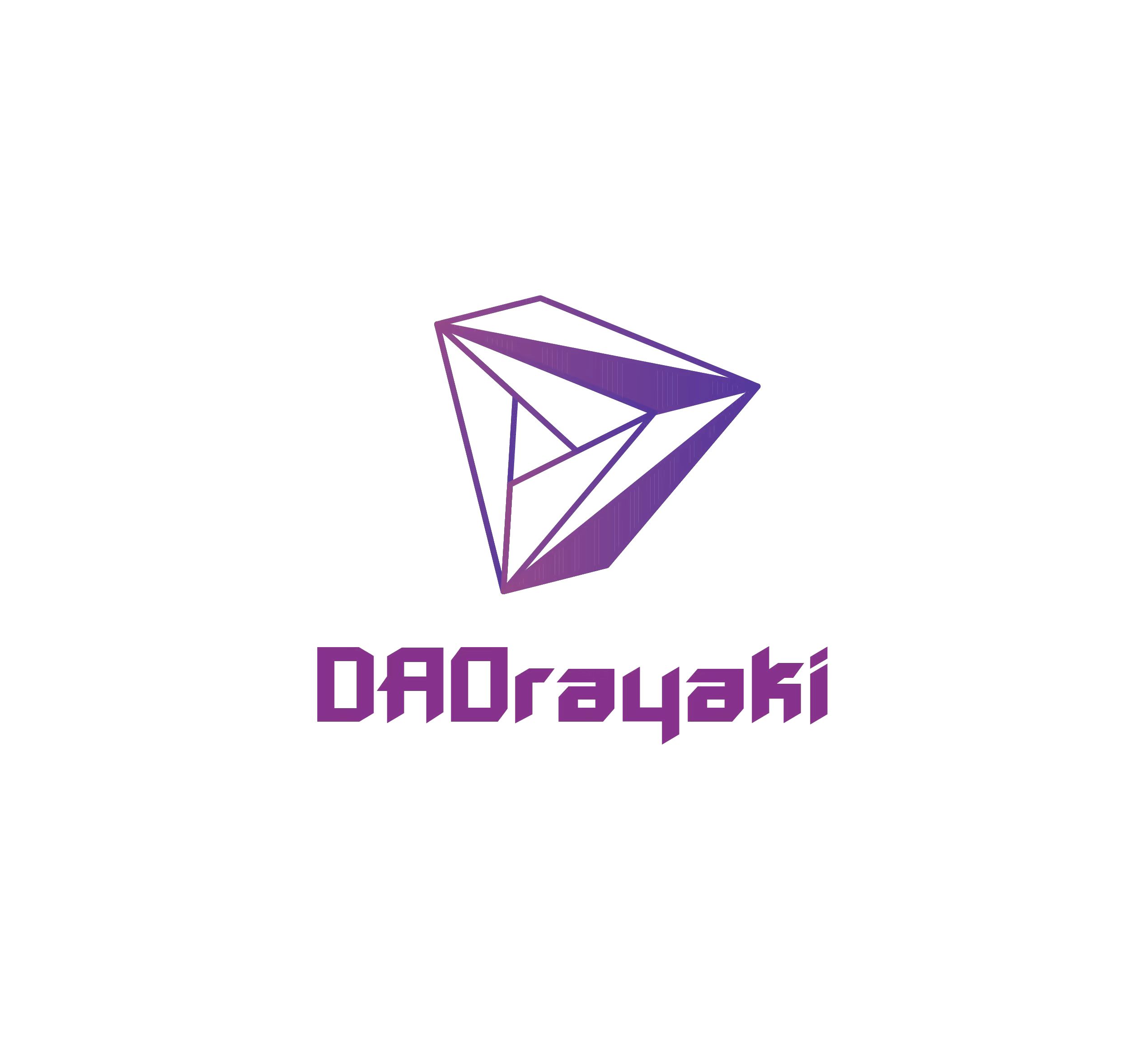background
background
With the development of blockchain technology and the non-homogeneous token NFT on the blockchain, more and more NFT artworks appear, and NFT has gradually attracted the attention of the art circle. Smart contracts on the blockchain can be a way to confirm the copyright or ownership of digital artworks. NFT is a collective term for digital artworks after they are chained through blockchain technology.
first level title
Q1 Chapter 1 Current Status of Digital Art and NFT Art
With the birth of computers and the development of related technologies, digital works of art are constantly being introduced and replaced iteratively. Compared with homogeneous digital currencies, non-homogeneous token NFT (Non-Fungible Token) is an on-chain digital currency based on blockchain technology. Items, artworks in this class are called NFT artworks. This chapter introduces the development status of digital artwork and NFT art respectively, mainly including origin, classification, development, characteristics and other aspects.
secondary title
1.1 Introduction to Digital Art
1.1.1 Definition of digital art concept
Digital art refers to works of art that are created or processed through digital equipment. On the one hand, new media and means are used to create or reproduce works of existing art forms; on the other hand, new art forms are created using media or creative means, which are mainly determined by computers or algorithms. This type of artwork is usually spread through the Internet, bringing people a new aesthetic experience and feelings.
Classified from presentation forms and technical means, digital art mainly includes the following forms: digital images, interactive installations, virtual reality, multimedia, cartoon animation, digital games, internet art, digital design, animation, digital photography, digital music, etc. That is to say, digital art is a multidisciplinary interdisciplinary field where art and technology are highly integrated, covering art, technology, culture, education and many other aspects. All media culture produced by digital technology and having independent aesthetic value can be attributed to the category of digital art.
Compared with traditional works of art, digital art has the characteristics of diversity, virtuality, convenience, and interactivity. The specific performances are as follows:
Diversity: Digital art is no longer limited to traditional painting forms and the physical limitations of materials in the real world. It can use digital means to reproduce reality or existing art forms, and can also generate automatic art through computer algorithms and other creative forms. , is a comprehensive subject that combines nature, humanities and social sciences. Digital art breaks through the limitations of time and space, making artistic expression more extensive and diverse.
Quickness: Digital art is a virtual art form composed of 0 and 1 bytes, which exists in the virtual world. It has no carrier in the physical world and can be quickly spread on the Internet. Just one upload button can make The whole world comes together to appreciate this work of art. The transmission of digital art is fast, avoiding the problems of transportation and display in the traditional world.
Interactivity: Digital art breaks the traditional form of art display, changing the original single static display method into an experiential and interactive multiple experience method, and the viewer's appreciation angle has also changed from parallel lines to cross lines, entering into the art works In it, it becomes an input part of the creation of the work, completes the creation together with the artist, and feels the dimension of the work is more extensive and in-depth.
Virtuality: Digital art is composed of bytes and stored in a virtual space in the form of data. Both storage and dissemination rely on Internet technology to realize rapid conversion, dissemination, storage and replication in the virtual world. At the same time, this attribute also makes digital art rely on electronic equipment such as computers and networks.
1.1.2 Development of digital art
Digital art originated in the 1960s. At first, scientists engaged in computer research used computers to paint and explain some visual phenomena such as sound images and aesthetic mathematical theories. However, their research results have brought great inspiration to people. For pioneering work in the generation of digital art. Then artists began to try to use new techniques for artistic creation. Digital painting in this period was very simple, with only straight lines, circles, triangles or polygons, and the colors were single and boring. With the development of computer technology, more and more artists have begun to understand and pay attention to digital painting using computers, and digital art has also integrated into the field of art, forming an independent branch.
secondary title
1.2 NFT Introduction
1.2.1 Concept definition of NFT art
The full name of NFT is Non-Fungible Token. It is a non-homogeneous token based on blockchain technology. All nodes in the blockchain network all over the world jointly guarantee the ownership of NFT and conduct transactions through smart contracts on the blockchain. NFT storage and trading. NFTs are now being used to commoditize digital objects in different contexts, such as GIFs, tweets, virtual trading cards, images of physical objects, games, sports collectibles, virtual real estate, and more. The emergence of NFT makes digital products easy to copy and compatible with ownership.
NFT art refers to a way to confirm the copyright or ownership of digital artworks that are originally known as reproducible and difficult to trace through the blockchain, turning them into unique, verifiable and easy-to-trade digital assets. NFT art is mainly manifested in the completion of data storage on the blockchain and the interaction of smart contracts.
NFT art has the characteristics of composability, programmability, uniqueness, tradability, provable scarcity, and community. The specific performance is as follows:
1. Composability:image description
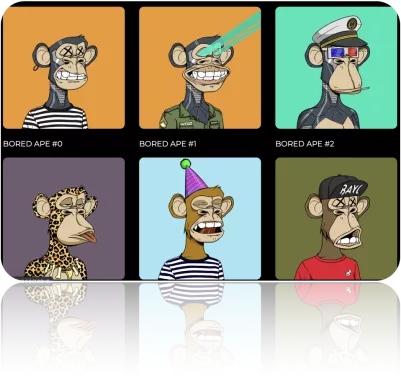
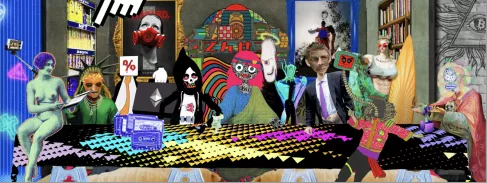
Figure 1 "The Boring Ape Yacht Club Series" Figure 2 "The Last Supper"
2. Programmability:Based on blockchain technology, artists can create more personalized scenes and conditions through smart contracts when generating NFT art, so that NFT art holders can reprogram or recreate NFT art. For example, CryptoKitties NFT, this NFT puts the DNA of different CryptoKitties on the chain, uses smart contracts to reproduce through different combinations, and synthesizes a new generation of CryptoKitties NFT. Another example is "The Last Supper" (Figure 2). This work consists of 22 layers, and elements such as characters, backgrounds, and decorations correspond to different layers. The owner of the layer can change an element of the work to change the whole work, but the owner of the main picture cannot decide how the painting changes.
3. Uniqueness:NFT art is stored on the blockchain. Each NFT art is mapped to a unique serial number on the blockchain and proves ownership and uniqueness through global nodes, making digital artworks certified and solving digital art copyright issues. , this kind of distributed node proves the uniqueness of ownership, which greatly solves the problem of trust in storage. The data is stored on the chain, which is open, transparent and checkable, which greatly avoids the appearance of copies of digital artworks and centralized companies through modification Data falsification digital artwork trust problem.
4. Tradability:NFT art is unique, non-tamperable and traceable, making it a digital proof of digital artwork stored on the chain, and it is also a commercialized art. Transactions on the chain through contracts ensure the authenticity of the transaction It solves the difficulty of buying and selling digital art, obtains a certain degree of liquidity, and makes digital art enter the world's top auction house like Christie's.
5. Provable rarity:When NFT art is released, the artist uploads a series of works or sets the number of editions of individual artworks when generating NFTs. These NFT artworks are all queryable and traceable on the chain, and the value of each artwork can be understood through calculation. scarcity. For example, the Crypto punk series [10] has a total of 10,000 avatars, and the alien avatars only occupy 9 of the 10,000 NFTs. Due to the scarcity, it creates a high collection value, which leads to the Alien NFT series of Crypto punk. The selling price has been continuously raised.
6. Community:NFT art has a high degree of community, relying on the advantages of Internet socialization, artists can communicate directly with members in the community, and at the same time, they can create art through community voting. Participants in the community are both consumers and communicators. Members of the community will spontaneously build and maintain the common interests of the community, and promote the exposure of information such as works of art. For example, the emergence and dissemination of various emoji packs, rainbow cat, frog and other Internet celebrity NFT art, artists can directly generate NFT by drawing emoji packs and other works in the community, and then sell them, because the community has a large audience However, such works of art are easier to sell and resell, and the tradability of NFT has also contributed to the value that was originally thought to have no pictures, avatars, or small videos.
At present, there are many different classification methods for the types of NFT art, but they lack completeness and systematization. This paper divides NFT art into 7 categories according to the different forms of expression and creation methods: painting, photography, generation, avatar, game, video, and GIF.
1. Painting category:image description
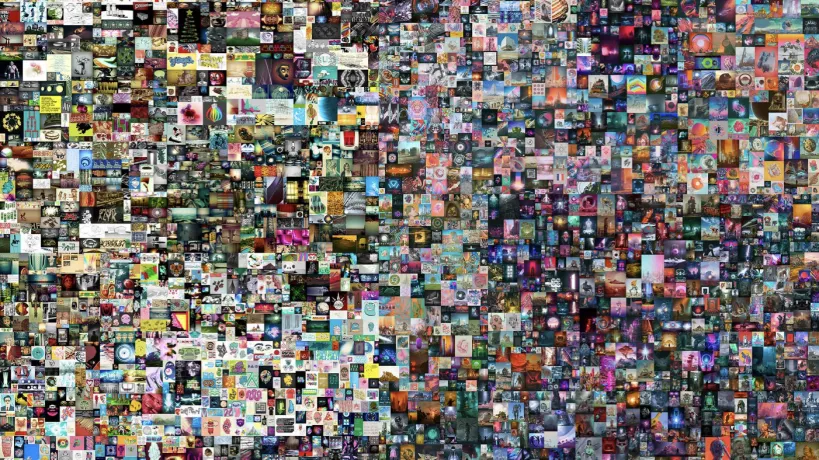
Figure 3 "Every Day: The First 5000 Days" Beeple
2. Generate class:Artists use computers to set specific programs, and finally run algorithms to generate unique works of art through computers. For example, the NFT artworks sold on the Art Block platform are all generated by computer algorithms, and then selected by artists and then uploaded to the chain to generate NFT artworks.
3. Avatar category:image description
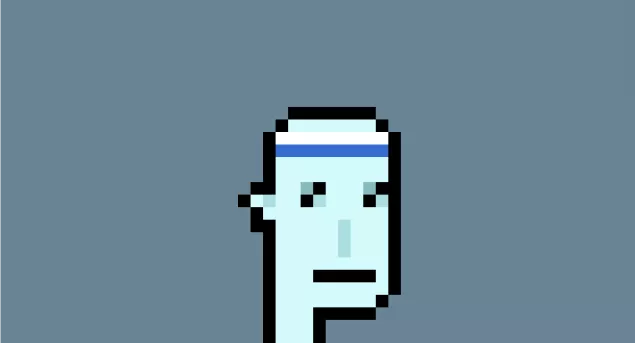
image description
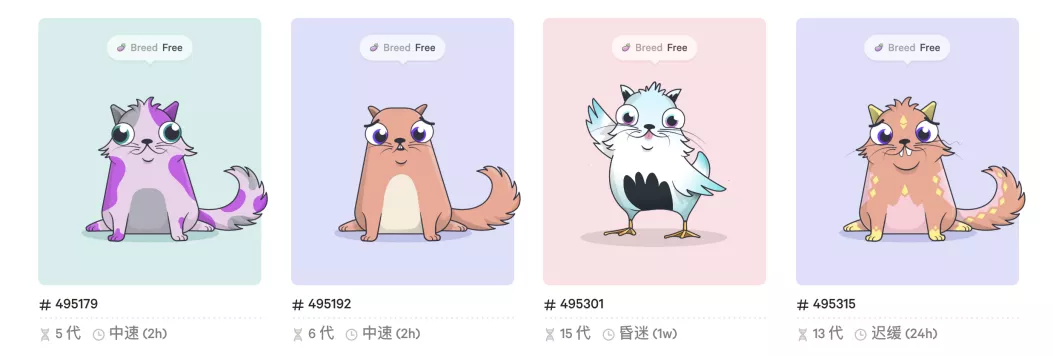
Figure 5 "Encryption Kitties"
4. Games:This type of NFT artwork adds new gameplay to the artwork through smart contracts, making the artwork have the characteristics of a game. CryptoKitties[10] (Figure 5) is a representative of this series. The holders of these encrypted cats can carry out synthetic breeding according to the content set in the smart contract, and then produce new cat breeds.
5. Video category:image description
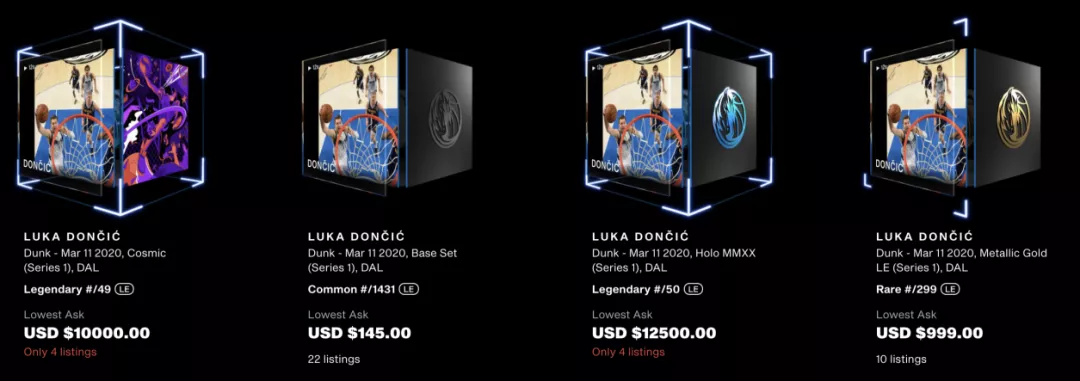
Figure 6 "NBA Star Card"
6. GIF class:This type of art works compresses pictures using a special algorithm, and forms a picture through multiple frames, so that the art works can achieve the effect of animation. Different from video NFTs, this type of artwork has a small amount of information and the picture quality is not clear and smooth, but it can save the time of information transmission and is very conducive to dissemination on the Internet, usually in the form of emoticons.
7. Photography category:image description
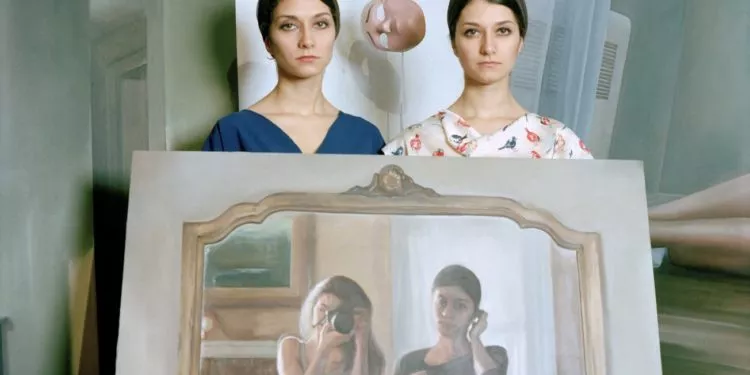
Figure 7 The photography NFT "Twin Flames" was sold for US$1.1 million[4]
1.2.2 The development of NFT art
The first popular example of NFT art is CryptoKitties, a collection of artistic images representing virtual cats. It allows collectors to buy, collect, breed and sell them on Ethereum. In December 2017, CryptoKitties led to a boom that caused congestion on the Ethereum network, and CryptoKitties is considered to be the main example of driving the cryptocurrency market in 2017.
In July 2020, the NFT market began to grow and attracted huge attention in March 2021, when the artist known as Beeple sold his NFT work "Everyday: The First 5,000 Days" at Christie's for $69.3 million [5]. The acquisition was the third-highest auction price for a living artist, behind Jeff Koons and David Hockney. In September of the same year, Sotheby's NFT online auction "Ape in!" sold 101 boring ape heads for $24.393 million[12], becoming the second highest price for an NFT after Beeple's "Everyday: The First 5000 Days" . In addition, other NFT artworks such as Cryptopunks, Auction Winner Picks Name, etc. are also sold at high prices in the market. Christie's auctioned 9 cryptopunks with a total of 9 avatars, which were finally sold for $16.96 million[6], and the first tweet was sold for $2.9 million; Auction Winner Picks Name, an NFT with music videos and dance songs, Sold for $1.33 million. The NFT works of art that have been photographed at new highs have gradually entered the public eye.
Many mainstream artists have also joined in the creation of NFT art, trying to innovate and explore. Artist Cai Guoqiang has successively launched two NFT art works, "The Eternity of the Moment-The Detonation of 101 Gunpowder Paintings" was sold for 2.5 million US dollars [6 ], "Blowing Up Yourself" has a total of 99 editions, and each edition is US$999[7].
first level title
Q2 Chapter 2 The Influence of NFT Art on Digital Art
secondary title
2.1 The impact of NFT art on digital art works
2.1.1 Protecting the Copyright of Digital Artworks
In the traditional art circle, works created by digital artists are difficult to obtain copyright protection. Digital files are easy to copy and copy, and copyright is difficult to define. Although such digital art works often appear in many top art galleries, institutions, etc. However, they have been rejected from art auction houses all year round, which makes digital art works continue to be marginalized in art transactions, and also greatly weakens the enthusiasm of artists to create. The emergence of NFT technology has made the copyright of digital artworks a verifiable way. Although the digital artwork that generates NFT can still be viewed and downloaded on the Internet, its ownership is unique and recognized by the entire network.
2.1.2 Expand the financial and social attributes of digital artworks
Artworks have financial attributes due to their scarcity, historical and cultural value, and creativity. As a form of digital artworks on the chain, NFT art not only enables digital art to obtain copyright certification, but also solves the problem of lack of scarcity of digital artworks, making it among the ranks of fine art. NFT art provides digital art with flexible and diverse circulation methods and trading scenarios to expand the financial attributes of digital art. For example: NFT artworks can be quickly circulated and traded through the Internet and blockchain technology. Secondly, multiple NFT artworks are sold in the form of blind boxes. Have the content of NFT works, so as to meet the needs of novelty hunting; or implement fragmented transactions of expensive NFT works of art, split the copyright of the work, and participants can own part of the copyright of this work as long as they spend a very small amount of money ; or pawn pledge of NFT artworks through smart contracts. Moreover, these diverse transaction modes are secured by smart contracts on the blockchain, providing trust for buyers and sellers who have never met before.
NFT art expands the social attributes of digital artwork. In today's society, the Internet links the whole world, becoming a means of communication for everyone, and also a platform for displaying identity and personality. People conduct personal promotion through online social media, and avatars have become an element in the social display link. NFT artworks Generated, the digital social avatar also has copyright and uniqueness, and the high transaction fee makes this kind of avatar NFT art a show-off point for people to socialize. For example, the famous NBA star Stephen Curry (Stephen Curry) tweeted The avatar was replaced by him using $180,000 to buy a boring ape [11]. Compared with digital art, NFT art has increased social attributes.
2.1.3 The means and content of artistic creation are more diversified
The content of traditional digital art creation is more expressed through static pictures or dynamic videos, or combined with some interactive means. NFT art is an NFT generated after digital artwork is on-chain, combined with smart contracts on the chain, making The means of digital art creation are more diversified, and creative means such as combined creation, secondary creation, and circulation transformation have been enhanced.
1. Combination creation: Split each part of the art work, draw it separately, and then combine and create it through computer algorithms to generate multiple art works of different combinations.
2. Secondary creation: Artists can give NFT artworks the right to be created again through smart contracts, and artists can give holders the right to change some parameters in the works, so that NFT artworks can present different artistic appearances due to different holders. Appearance, or by combining two or more NFTs by setting a specific scene, a new NFT is born or synthesized into a new upgraded version of NFT artwork, or an NFT artwork created in the form of text- Loot[9], and then expand through the community.
secondary title
2.2 The impact of NFT art on digital art creators
2.2.1 Expansion and Extension of Creator's Role
NFT art enables the expansion and extension of the role of art creators. Artists can not only be the subject of self-expression like traditional art creation, but also directly communicate with the community of collectors through the Internet platform. The content created by artists can be voted by the community, and then artistic creation. This new relationship allows artists Be the central but not the only participant in its artistic creation. For example, the "Text Gene Project" created by domestic artists, artists build a huge text gene pool based on a large number of interdisciplinary texts, generate unique sample verses based on the texts left by community participants, and then carry out artistic creation.
At the same time, NFT art has the characteristics of secondary creation, which makes the art creation completed by the artist alone become the joint creation of the artist and the holder. The holder has changed from a simple buying and selling relationship to a cooperative relationship. According to the rules formulated by the artist Carry out secondary creation and complete artistic creation together with the artist. The creator of a work of art can be many unknown holders from all over the world, which expands and extends the role of the creator.
2.2.2 Protection of the rights and interests of art creators
Based on blockchain technology, NFT art realizes non-tamperable and distributed storage content, ensuring that the transaction price and process of NFT works are open, transparent, authentic and traceable. It is difficult for the traditional royalty mechanism to monitor the secondary transaction and circulation of works of art. After NFT art solves the problem of true and false copyright of digital art and the problem of orderly inheritance, through the execution of the contract on the chain, artists can , will get the corresponding royalties, and permanently own the income right of the works of art. NFT protects the rights and interests of art creators and has a positive and far-reaching impact on the creation of artists and the market.
first level title
secondary title
3.1 The Ecological Status of the Digital Art Market
Nowadays, with the development of science and technology, digital art has become the main presentation form of major exhibitions and various media, and has become a backbone force in contemporary art. Because of its convenience, speed and operability, digital art has become a It is the only choice for contemporary art creation, and works of art usually use sound and light, machinery, the Internet, artificial intelligence, etc. A variety of materials and expression techniques have also spawned many creative themes, such as futurism, industrial punk, cyberpunk, etc.
image description
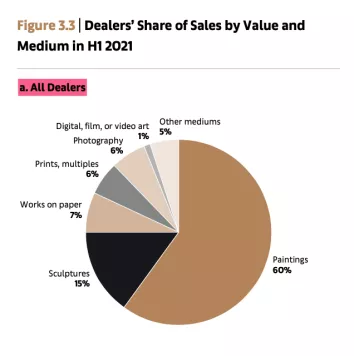
image description

secondary title
3.2 Ecological Status of NFT Art Market
NFT artworks have also brought about significant changes in the art market mechanism. Since Christie’s auction of the art work “Every Day: The First 5,000 Days” at a high price of US$69.3 million at the beginning of this year[15], the market’s attention to NFT art has increased significantly. Subsequently, major auction houses successively sold NFT art works . For example: the famous street artist Banksy's work "Mornos", the creator of the work destroyed the original work and generated an NFT from its electronic version. In the end, the NFT work was sold on OpenSea at a high price of approximately RMB 2.47 million. Sold, more than 3 times the purchase price of the original work. In August, Christie's held its first design NFT auction, launching a series of 10 colorful NFT designs by American designer Misha Kahn, whose biological forms were imagined as functional furniture. In September, the world's first NFT physical gallery "Creation Art Gallery" officially opened in Hong Kong K11 Musea, and also presented the first diversified NFT art theme exhibition for the purpose of education. It can be seen that NFT art has gradually entered the public's field of vision through various channels, and has become a hot spot in the emerging art market and a sought after object in the collection market.
According to the sales statistics of all NFTs on the Ethereum network [14], both sales and quantity on the blockchain will increase significantly in 2021. Sales have increased from US$17.4 million in the first half of 2020 to nearly US$1.3 billion in the same period of 2021. By the end of the second quarter of 2021, the number of buyers and sellers in the NFT art market reached 53,198 and 18,429, respectively.
image description
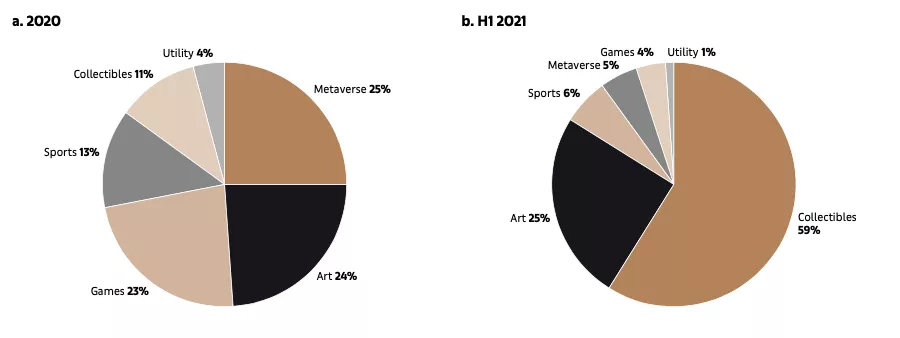
secondary title
3.3 The impact of NFT on the digital art market ecology
3.3.1 Impact of market structure
image description
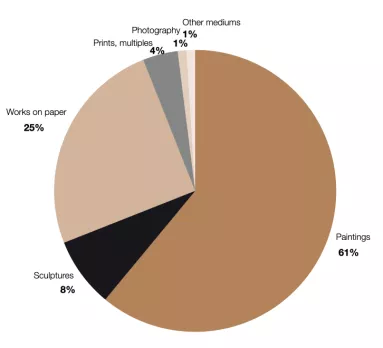
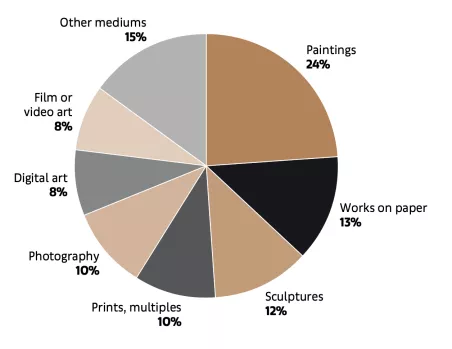
Figure 12 Distribution of transaction volume in the art market in 2020 Figure 13 Classification of artworks owned by collectors in 2021H1
image description

Figure 14 Comparison chart of NFT primary and secondary trading markets
3.3.2 Diversification of sales channels
In the traditional art market, gallery dealers act as artist brokers, managers, and promoters. At the same time, they are also mediators between collectors and artists, maintaining the interests of both parties for a long time. According to surveys, an average dealer in the primary market Dealers usually represent 19 artists (32 artists working in the primary and secondary markets). Artists not selected are outside the mainstream art world, which makes it possible for more outstanding works of art to be ignored. Gallerists exhibit and sell works of art through art fairs. Art fairs have become an important position in the traditional art market. They provide a place for sales and exhibitions, bring direct benefits and potential opportunities to dealers, and become a platform for collectors and artists to communicate and a channel for obtaining market information. In addition, the art fair has also become a centralized trading platform, providing an intermediate guarantee for the authenticity of these works of art.
first level title
secondary title
4.1 The impact of NFT on digital art
NFT art has gradually become an important branch of digital art, enhancing the credibility and traceability of traditional digital art. NFT protects the copyright of digital artworks, expands the financial attributes of digital artworks, and at the same time makes the means and content of artistic creation more diversified. In addition, NFT allows the role of art creators to be expanded and extended, which greatly protects the rights of art creators.
secondary title
4.2 Challenges of NFT art
The non-tamperable and decentralized features of the blockchain enable more digital works of art to be confirmed. NFT art has brought huge benefits and value to the art world, but at the same time, it has also created a lot of confusion. For example, the lowering of the threshold for artistic creation has resulted in a surplus of digital artworks; secondly, without the control of traditional gatekeepers, a large number of unfiltered artworks flow into the market, resulting in mixed art markets, such as the digital art trading platform opensea In fact, a large number of works of art are making up for the number, which requires collectors to have better judgment.
secondary title
4.3 Future Development Direction
In the direction of NFT art creation in the future, NFT art can promote new areas of artistic language and artistic concept development, and carry more diverse art forms, such as audio, articles, and artistic creation. Based on the characteristics of digital art and blockchain technology, NFT artworks enable more ways to collect digital artworks, which in turn promotes the development of digital art.
In terms of creative content, NFT art will be more combined with existing culture. For example, the NFT trading platform "Magic Core" [16] launched by Tencent, its first NFT is "Thirteen Invitations", which showcases Dunhuang art, promotes traditional culture on the chain, or uses various elements of traditional culture through creative Reassemble and upload to the chain, and share with NFT enthusiasts around the world.
In the direction of commercial applications, NFT will be more integrated with the Metaverse in the future. In the metaverse, games, user-generated content, art, finance, avatars, multiplayer games and social, etc. In the virtual space of the metaverse, there will be fewer restrictions on artistic creation. For example, the material of clothing can not consider comfort, sculpture can not consider gravity and connection, photography can have more difficult-to-reach perspectives, etc. Of course, classic scenic spots of various countries can also be built in the Metaverse to promote tourism culture, etc. Currently, the country of Barbados has announced the establishment of an embassy in the metaverse to promote the development of national visas and other work.
references
references
[1] Ars Electronica Festival Linz http://www.cfuturelab.com/cn/category/institution-list/detail!Ars-Electronica-Linz-Austria
[2] Frankfurt NODE15 Digital Art Forum https://nodeforum.org/activities/festival/node15/exhibition/
[3] China International Art Exhibition http://www.artda.cn/zhanxunfabu-c-11164.html
[4] The photography NFT "Twin Flames" was sold for $1.1 million https://www.blocktempo.com/nft-photo-twin-flames-landed-at-christies/
[5] Beeple creative masterpiece: Christie's first purely digital artwork https://www.christies.com/features/Monumental-collage-by-Beeple-is-first-purely-digital-artwork-NFT-to-come- to-auction-11510-7.aspx?sc_lang=zh-cn
[6] Cai Guoqiang "The Eternity of the Moment - The Detonation of 101 Gunpowder Paintings" https://trlab.com/artwork/TransientEternity-101-Ignitions-of-Gunpowder-Paintings
[7] Cai Guoqiang "Exploding the Self" https://trlab.com/artwork/Exploding-the-Self
[8] NBA Top Shot NFT artwork https://nbatopshot.com/search?byPlayers=2544&orderBy=PRICE_USD_DESC
[9]NFT-Loot https://www.lootproject.com/
[10]Cryptopunk https://www.larvalabs.com/cryptopunks
[10]CryptoKitty https://www.cryptokitties.co/
[11] Curry spent $180,000 to buy a digital avatar, and this may just be the prelude to the explosion of NFT http://finance.sina.com.cn/tech/csj/2021-08-31/doc-iktzscyx1370155.shtml
[12] Sotheby's NFT online auction "Ape in! https://www.sothebys.com/en/buy/auction/2021/ape-in/101-bored-ape-yacht-club?locale=zh-Hant
[13]Resilience in the Dealer Sector https://www.ubs.com/global/en/our-firm/art/collecting/art-market-survey.html
[14] NFT art trading data statistics platform https://nonfungible.com/
[15] Beeple creative masterpiece: Christie's first purely digital artwork https://www.christies.com/features/Monumental-collage-by-Beeple-is-first-purely-digital-artwork-NFT-to-come- to-auction-11510-7.aspx?sc_lang=zh-cn
[16] Huanhe official website https://www.huanhe.org/
[17]Bsteh, Sheila, and Prof Dr Filip Vermeylen. "From Painting to Pixel: Understanding NFT artworks." (2021).
[18]Wang, Qin, et al. "Non-fungible token (NFT): Overview, evaluation, opportunities and challenges." arXiv preprint arXiv:2105.07447 (2021).
[19]Nadini, Matthieu, et al. "Mapping the NFT revolution: market trends, trade networks and visual features." arXiv preprint arXiv:2106.00647 (2021).
[20]Frye, Brian L. "NFTs & the Death of Art." Available at SSRN 3829399 (2021).


